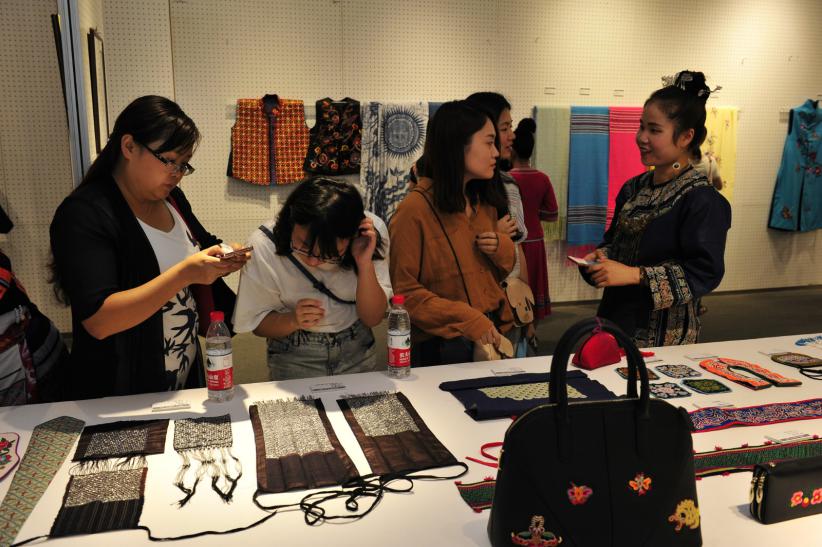Source: Fashion • Art Design Institute
On September 27, the performance by intangible cultural heritage practitioners involved in the 1st Donghua training class of “Innovative Design of Traditional Embroidery” themed “Embroidery Creates New Vision” was held at Yan’an Road campus. Liu Chunhong, Vice President of Donghua University, Yang Xiaohui, Deputy Director of Intangible Cultural Heritage Division of the Ministry of Culture, Li Jun, Dean of Fashion • Art Design Institute, Feng Xinqun, Deputy Dean of Fashion • Art Design Institute and Chen Bin, Professor-in-charge, together with guests from cooperative universities and colleges as well as enterprises, witnessed the new fashion of embroidery clothing themed “Collision between Tradition and Fashion, Compatibility between Inheritance and Innovation.”

Li Jun stated that the 1st Donghua training class of “Innovative Design of Traditional Embroidery” oriented at intangible cultural heritage practitioners has made fruitful results and hopes that all the students will make persistent efforts to further boost the preservation, inheritance and development of intangible cultural heritage. Besides, he acclaimed the superb techniques of intangible cultural heritage practitioners from Guizhou and Shanghai as well as the collaboration of students from Fashion • Art Design Institute in innovative fashion design, which genuinely represents the Institute’s spiritual connotation of “Beautiful Institute, Fashion Home.” Yang Xiaohui also encouraged the practitioners to make contributions to the inheritance and development of intangible cultural heritage by virtue of enriching the knowledge and broadening the horizon, aiming to render the traditional Chinese culture “going out.”
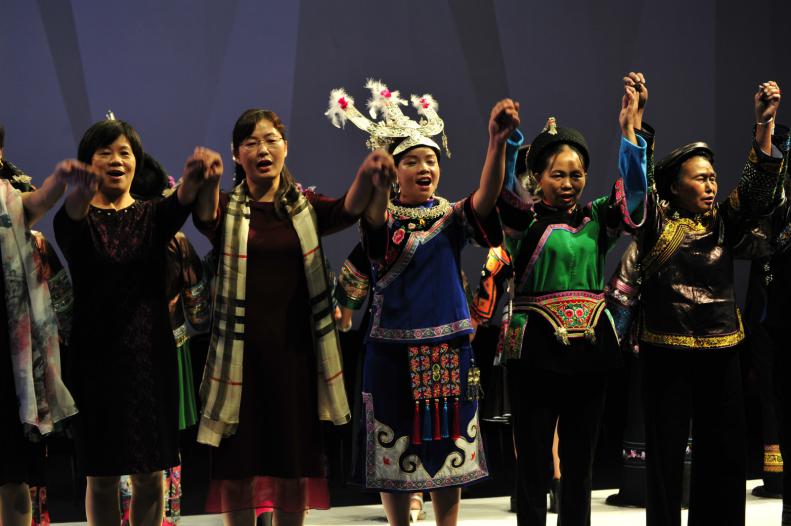
During the 21-day professional training, the 48 skilled students participated in several activities including theoretical studies, master lectures, exchange visits and creative design practices, which help them enhance the artistic cultivation, aesthetic ability and innovation capacity. In the performance, the students personally wore and displayed their unique and exquisitely embroidered ethnic apparel and clothing, presenting simple, beautiful, proud and self-confident pictures of them. In addition, the delicate pieces of embroidery and profound patterns on the displayed traditional costume tell the spirit of folk culture and traditional costume art, winning numerous praises from the viewers. Students adept at singing and dancing sang the minority song of Guizhou at the end of the performance, creating an immersive sense for the audience as if they were in a simple and mysterious minority village, which won cheers constantly.
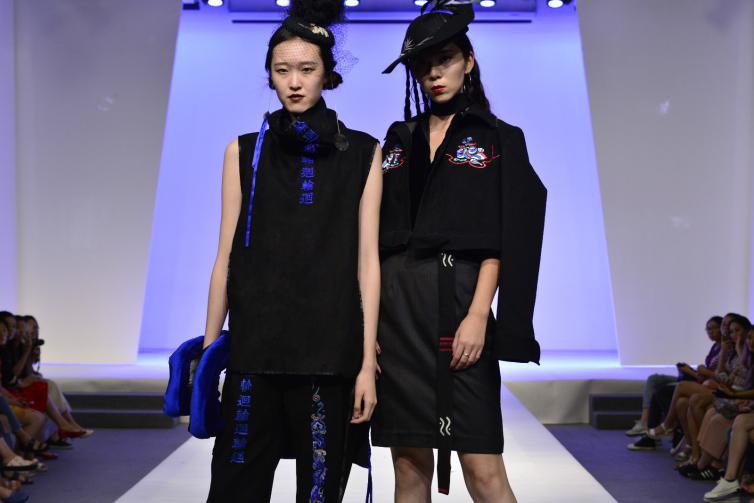
Tradition and modernity constitute the two integral parts of apparel development. To this, students from the Fashion • Art Design Institute and intangible cultural heritage practitioners were organized to cooperate with each other for apparel and clothing design and present their cooperative achievements in the performance. The sound cooperation integrates modern design with traditional embroidery art and perfectly interprets the new fashion of embroidery themed “Collision between Tradition and Fashion, Compatibility between Inheritance and Innovation,” enabling the audience to enjoy a splendid visual feast.
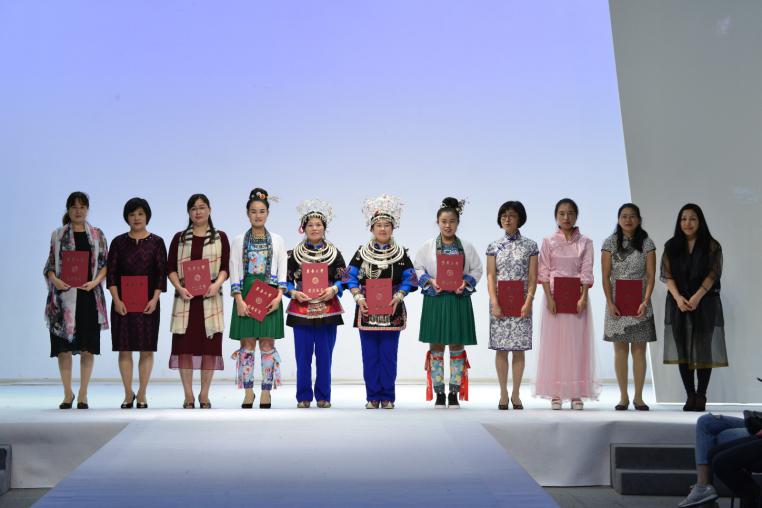
Vice President Liu Chunhong presented the honorary certificate of outstanding student for 5 intangible cultural heritage practitioners.
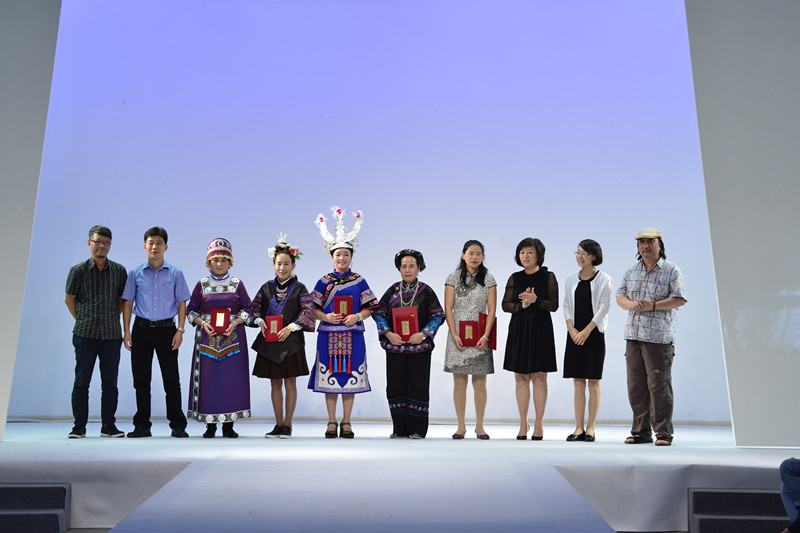
After the performance, all the practitioners accompanied the guests from other institutions and enterprises to visit the static exhibition of ethnic costume and clothes and introduced the diversified embroidery techniques, dyeing methods, other technologies and design features to them in a warm atmosphere.

Intangible cultural heritage serves as an import carrier of transmitting ethnic spirit and ethnic culture. Guizhou embroidery craft is one of the outstanding representatives of China’s intangible cultural heritage. The preservation of traditional Chinese culture and sustainable development of intangible cultural heritage necessitates not only the inheritance and promotion of artistry, but also the combination with modern design, which is precisely the aim of the training class. Let’s look forward to enjoying more modern, fashionable and innovative embroidery design works in the future.
